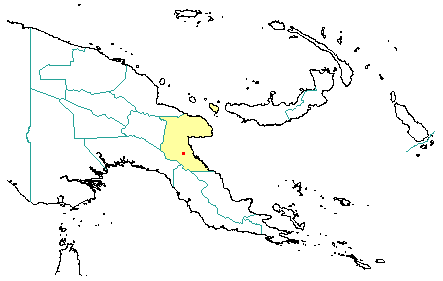
in PNGplants database
PNGTreesKey – Sterculia lepidotostellata Mildbr. |
Barry Conn (NSW) & Kipiro Damas (LAE).
Guide to trees of Papua New Guinea
Copyright held by the authors, National Herbarium of New South Wales, and Papua New Guinea National Herbarium
Botanische Jahrbucher für Systematik, Pflanzengeschichte und Pflanzengeographie Vol. 62: 361 (1929)
Other Literature: Lembaga Penelitian Hutan 111-112 (1976)
Family: Malvaceae
Dicotyledon
Timber Group: Non-timber species
Field Characters: Large canopy tree (up to 30 m high) or Small sub-canopy tree; Bole cylindrical (up to c. 40 cm diam.); straight (bole up to c. 18 m long); buttresses buttresses absent; spines spines absent; aerial roots aerial roots absent; stilt roots stilt roots absent; Bark brown, smooth or slightly rough, pustular, lenticels irregular (large); Subrhytidome (under-bark) brown; less than 25 mm thick; bark blaze consisting of one layer; faintly to non-aromatic; outer blaze pale brown, markings absent, fibrous; inner blaze pale brown, markings absent, fibrous; bark exudate (sap) absent; terminal buds not enclosed by leaves.
Indumentum: Complex hairs present (sparse), disk-shaped (peltate) or star-like (stellate) (stellate scales); stinging hairs absent; mature twig indumentum (hairs) present when young or absent, hairs sparse (usually (stellate scales).
Leaves: Leaves clustered at end of branches or spaced along branches, spiral (leaves occurring singly at a node and arranged spirally up the branchlet), simple (a leaf composed of a single blade); petiole present, not winged, attached to base of leaf blade, not swollen or swollen (slightly (at both base and tip); leaves slightly broadest above middle, 3.0-4.0 cm, 1.0-1.5 cm; symmetric, entire, not dissected or lobed, acuminate (shortly), venation pinnate, secondary veins open, prominent, intramarginal veins absent; leaves lower surface pale green, upper surface green (glossy), indumentum (hairs) present (with stellate scales on lower surface, especially on mid vein), indumentum (hairs) sparse; absent; domatia absent; stipules present, free, laterally placed, not encircling the twig, leafy (triangular, with a single rib), not fringed, large (c. 5 mm long), not persistent (soon dehiscent, only present at growing point of branchlets).
Flowers: Inflorescence axillary, flowers on a branched axis, cones absent; flowers unisexual, unisexual with male and female flowers on the same plant, stalked, flowers with many planes of symmetry; perianth present, with all sepals and/or petals (hence tepals) similar; 5, some or partly joined (forming a perianth tube and 5 perianth lobes); stamens 10-(male flowers)-15, absent, joined (to form a staminal tube around the ovary and style), free of the perianth; ovary superior, carpels separate (when more than one), locules 4; styles free, 4.
Fruits: Infrutescence arranged on branched axis, fruit (50.0-) 60.0-80.0 mm long, 25.0-45.0 mm diam., brown (glossy), not spiny, non-fleshy, aggregate, dehiscent, follicle; seeds about 10 mm long, not winged, seed 1-10 mm diam.
Distribution: Morobe.
 | Botanical records in PNGplants database |
Notes: Notes The genus Sterculia was previously classified in the family Sterculiaceae. Sterculia lepidotostellata is a very inadequately known species, such that its taxonomic status is unclear.